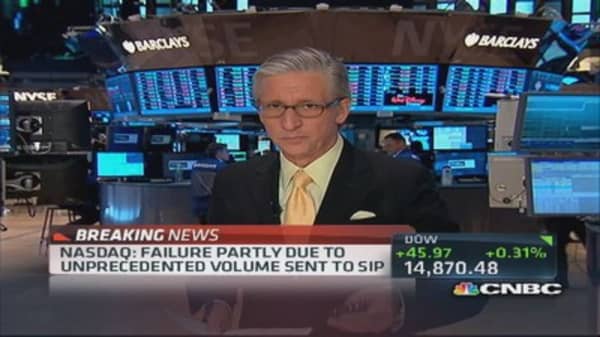1) Nasdaq accepts some of the responsibility for the incident, saying, "A number of these issues were clearly within the control of Nasdaq OMX."
2) They continue to place a large part of the blame on NYSE/Arca, the NYSE's electronic trading platform. According to Nasdaq, the SIP's processing capacity was overwhelmed when a matching engine at NYSE Arca had trouble connecting to the SIP. The SIP (security information processor) is the network that carries the quotes and trades for Nasdaq.
There were over 20 connect and disconnect sequences, each of which consumed "significant resources" that eventually overwhelmed the SIP. Essentially, a huge burst of quotes—many of them stale—shut down the system.
Nasdaq's conclusion: There was a "latent flaw" in the SIP software code.
But was the NYSE a part of the problem? The implication is that it was, since the problem started when Arca was trying to reconnect with the SIP.
(Read more: Finger-pointing on Nasdaq outage)
The only external analysis of this event I have seen was done by Eric Scott Hunsader at Nanex. His conclusion: "[T]his burst of quotes had to originate with the SIP itself. It is highly unlikely that anyone or any process external to the SIP environment could have caused or triggered the resending of old quotes. ... Arca, and anyone external to the SIP could not have caused the quote bursts."
Here is the Nanex study.
3) They promise better communication. Nasdaq says it is "undertaking a comprehensive review of the policies and procedures for communicating with customers." That's good news. It has been widely criticized for having to little to say during the crisis.
They have sent a letter to their listing clients that contains a new Commitment to Transparency statement in which they commit to "providing you with information as we know it."












